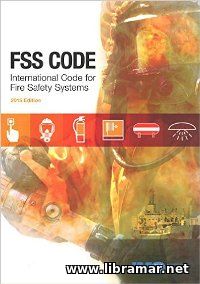 The FSS Code has been officially adopted by the MSC at it's 73rd session in December 2000 with the aim to provide the maritime industry with the international technical standards relating to the fire safety systems and associated equipment that are required by SOLAS.
The present Code is mandatory under the amendments to SOLAS. The volume contains the required engineering specifications relating to the fire safety arrangements and all equipment concerning the fixed gas-, water-spraying, foam and water mist fire extinguishing systems on ships, sample extraction smoke detection systems on tankers, portable powder, gas and other fire extinguishers of all sizes, PPE, i.e. personal protection equipment, international shore connection, inert gas systems, automatic sprinkler systems, low-location lighting systems, fire detectors, fixed alarm systems, main and emergency fire pumps, means of escape, deck foam systems, fixed hydrocarbons gas detection systems etc.
In addition, the present edition of the FSS Code includes all relevant resolutions of the IMO and also all circulars. The publication is there in the list of mandatory papers that shall be carried on board any ships falling under SOLAS. All information that has been included in the book will be very useful for any crew member dealing with the operation of the above listed equipment or its maintenance.
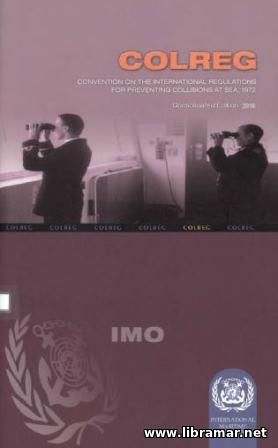 The latest consolidated edition of the COLREG convention. The rules and regulations contained in this convention are intended to apply to all ships navigating in the navigable high seas and waters. The convention opens with an article on the general obligations. Then, the arrangement of the material will follow the traditional one use in the previous release of the COLREG, but the contents has been revised in order to consider all developments and changes in the field of marine navigation.
The document is an absolute must-have on board any seagoing vessel and thorough knowledge of the rules and regulations is prerequisite for any ship navigator. Needless to say that failure to know the rules and comply with them will inevitably result in the negative consequences. That is why all crew members involved in the navigation in any way, are encouraged to ensure that they are in possession of the latest release of the convention, and that they know and understand all of the rules. Save this publication and make sure It is readily available at all times, considering its vital importance for the safety of navigation of your vessel, being one of the most important conventions ever issued by the IMO.
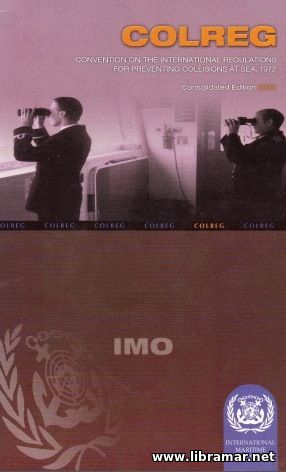 The ColReg has been formally accepted by many Flag States since the time of its initial adoption in 1972 and entering into force which followed in 1977. It was amended several times, and the present volume was released to include the consolidated text of the above mentioned Convention, taking into account all latest amendments made to the content of the Convention.
This official publication opens with the official text of the initial Convention as of 1972, which is followed by the amended version of the Convention. The main content of this document has been arranged in five major parts from A to E - the first part A provides readers with some general introductory information, the second part B has been fully dedicated to the rules for steering and sailing, while the third part C is mainly dealing with the navigation lights plus shapes. Two remaining parts D and E of the volume are addressing the sounds and light signals, and the exemptions that may be granted from the requirements of the Convention.
There are four annexes at the very end of this volume that provide the required supplementary information such as the distress signals, additional signals to be utilized by the fishing vessels, various technical details of lights/shapes, and sound signals. Needless to say that this is one of the critically important publications to be carried on the navigation bridge of any vessel...
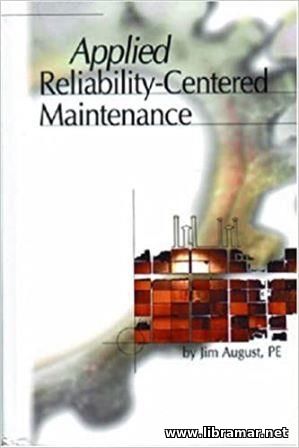 Written by the professional engineer having decades of practical experience, the present volume is intended to be used by the people dealing with the RCM, standing for the reliability-centered maintenance model. The subject model was developed and first introduced by the United Stated Department of Defense.
The original idea was to apply the subject system for controlling the maintenance expenses during the project of the famous 747 air liner, when the idea was to improve the reliability of the craft. In the pages of this volume, the RCM model is being explained in detail to the industry engineers and maintenance technicians and managers in a purely practical way, thus eliminating the boring and too academically technical tone used in the traditional volumes.
As a result of his efforts, the author managed to offer his readers a perfect, concise and understandable guide on what exactly they shall to if they want to achieve the desired results. The volume starts with a general overview of the RC, followed with the maintenance aspects and RCM performance.
After that, the author proceeds to the applications of the RCM, supplementing the theoretical part with the real life examples, talking about all pros and cons. The maintenance software is covered in the separate chapter. Note that there is also a glossary of the terminology used for those who are relatively new to this subject.
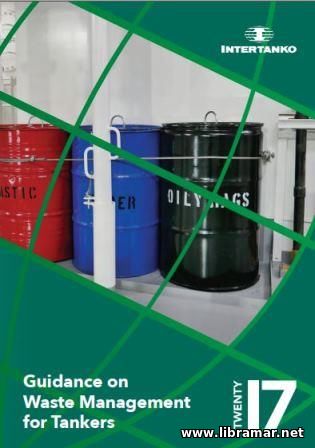 This is a good and practical handbook released by one of the most respected international entities. As the title implies, the idea of the authors was to provide the crew members as well as the shore support people of the tanker vessels with the necessary knowledge of how the wastes, commonly generated on board tanker vessels, shall be conducted without violating any applicable rule or regulation.
First of all, the readers will be acquainted with the general provisions of the MARPOL Convention and particularly Annex V to it, dealing with the garbage pollution prevention. This is followed by the practical guidelines covering virtually all that they need to know in order to dispose of the wastes and remaining in compliance. Here they will find the instructions on the proper use of the shipboard incinerator’s, galley and medical wastes, e-wastes, plastics, boiler wastes and so many other stuff.
After that, they will read about the proper record keeping since this is one of the most important factors, with the records subject to the checks by the port state control inspectors and other authorities. Also, there are some useful instructions provided for evaluating the adequacy of the waste reception facilities provided in the ports.
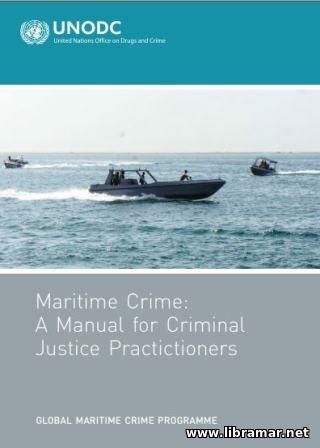 The content of the present guidebook was developed by the United Nations Office on Drugs and Crime within the frames of the GMCP, standing for the Global Maritime Crime Program, with the idea to provide all members of the Organization with the professional technical support required for tackling the whole widest range of the today’s maritime crime.
The necessary support shall be provided by the staff of the Program for fighting against all types of maritime crime including, but not limited to the trafficking of drugs, smuggling, armed robbery, terrorism etc. the idea of the authors of this compact Manual was to collect the available material and present it in a very readable form, allowing readers to use it, setting out the current legal regime governing the different maritime areas.
Moreover, it will give valuable advice on searching activities, collection of the necessary evidence on board ships etc. – the coverage is remarkably impressive. The volume will be ideal for using for training purposes but it will be equally useful when applied as a practical guide for real cases, that is why it is aimed at the practitioners and not only students or graduates of the relevant disciplines.
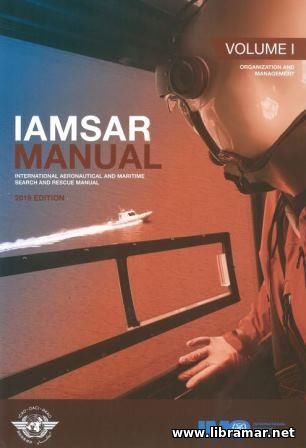 This is a full set, all three parts of the officially released IAMSAR Manual. The primary declared purpose of these publications is to provide the States with the assistance they require to meet their SAR needs as well as to meet all obligations that these States have accepted under relevant international conventions. The Manual will provide readers with the technical guidance for both maritime and aviation approach to the organization and provision of the search-and-rescue services.
Each of the parts making this Manual has been prepared with particular SAR system - note that they can easily be used as standalone documents. Alternatively, the provisions contained in these volumes can be applied in conjunction with the other parts. You may need to have only one, two or all three volumes readily available and this will depend on the duties you have been assigned. The first volume contains six major chapters covering the general system concepts and main components, training and qualification requirements, system management, communication matters, and ways to improve services.
The second volume is devoted to mission co-ordination including the SAR system, initial and awareness action, operations and techniques involved, emergency assistance, general guidance for the aircraft SAR operations etc. Finally, the last volume is dealing with the mobile facilities and will give readers the information about the rendering assistance and on-board emergencies, coordination of the operations and other important aspects.
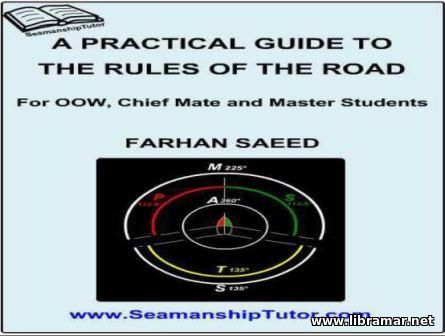 The main objective of the volume was to provide readers with the resource for self-teaching and self-examination on the rules of the road as well as the navigating lights together with the all possible situations. Having gone through all parts of the document with due attention, the readers will be prepared for the exams for COC since the content covers the situations that are normally discussed during the oral exams.
The author presented the material in two parts, starting with the plain and detailed explanation of the Rules, which is followed by the practical situations, and exam questions/answers. The content perfectly covers the Colregs and as such will be really useful for the students.
The text part of the volume is supplemented with the interactive software on the navigating light identification, which is readily available on the website of the author. The deeply worked real life scenarios will not only help you to prepare for the examinations but will contribute to your growing as the specialist ready for working at sea and aware of the provisions of the associated rules, knowing how to behave and what actions to take in all situations that might take place when sailing.
|







